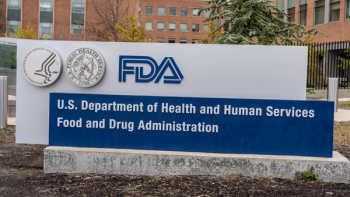
Medicare Part B Data: Approach with Care
CMS's Part B data release has increased transparency but has also resulted in potentially misplaced scrutiny of high-billing doctors. Ben Scher, Kathleen Twigg, and Andrew Huson take a closer look.
Medicare Part B Data: Approach with Care
CMS's Part B data release has increased transparency but has also resulted in potentially misplaced scrutiny by policy makers and health sector critics for high-billing doctors and pharmaceutical manufacturers. Ben Scher, Kathleen Twigg, and Andrew Huson take a closer look at the data reveals potential alternative explanations for prescribing behavior that may mitigate a policy concern.
Recently, the Centers for Medicare & Medicaid Services made available to the public for the first time detailed data regarding the Medicare Part B program. The data cover all of 2012 and contain a wealth of information—more than nine million records of data for more than 880,000 healthcare providers. For the first time, one can look up a doctor by name in a publicly available data set and
observe a great deal of information, including the services provided, the drugs administered, and the amounts paid for those services and drugs
Not surprisingly, these data have garnered a great deal of attention, with much focus on high-billing doctors.[1] Ophthalmologists, specifically, have received considerable scrutiny as a result of the data’s public release.
One reason that ophthalmologists are often high billers is because the drugs that they provide to Medicare beneficiaries can be very expensive. Lucentis, for example, a drug manufactured by Genentech to treat wet age-related macular degeneration (wet AMD), sells for about $2,000 per injection and accounted for almost $1 billion in Medicare Part B payments in 2012. Avastin, also manufactured by Genentech, is approved for cancer treatments but is also used off label to treat wet AMD. The dose of Avastin typically administered by ophthalmologists sells for approximately
Medicare Part B payment to doctors when they inject these drugs is set at a 6% markup over the drug’s Average Sales Price (ASP), and hence a drug that costs more for a doctor to acquire (i.e., has a higher selling price) has a higher Medicare payment. Drugs that cost more also have a potentially higher profit for the doctor, because the 6% markup will be larger for a drug with a higher selling price. For example, a 6% markup on the average sales price of Lucentis is $120 ($2,000 times 6%), whereas a 6% markup on the average sales price of Avastin is only $3 ($50 times 6%).
It has been suggested by some articles that it may be irresponsible for ophthalmologists to use Lucentis instead of Avastin. Moreover, some cite the potential difference in profits to further suggest that doctors may be using Lucentis
The newly released data can be used to perform a more careful analysis that tests two competing hypotheses regarding doctors’ use of these drugs. In particular:
1. Do ophthalmologists that administer Lucentis appear to be doing so because they earn higher profits, as has been suggested in the press? Specifically, if doctors view Lucentis and Avastin as very similar or identical, and the only factor affecting the decision to administer one above the other is driven by profit, then one would expect doctors to administer one or the other but not both.
2. Alternatively, do ophthalmologists who administer Lucentis appear to be doing so because they are exercising medical judgment on a patient-by-patient basis and concluding that Lucentis is the best choice in certain instances?
To investigate these competing hypotheses, we focus on ophthalmologists who tend to use these drugs frequently, because these are the type of high-billing doctors that are the focus of the articles in the popular press. Specifically, we limit the data to ophthalmologists with 200 or more patients who received injections of these drugs over the course of 2012. 547 ophthalmologists meet this criterion and are included in our analysis. Across these high-volume doctors, 11% only administered Avastin to their patients, 19% only administered Lucentis, and 70% administered a mix of the two drugs to their patients—Avastin to some patients and Lucentis to others. This finding is certainly consistent with the second hypothesis above.
Moreover, for doctors that use these products in high volumes, the “mix” group often includes a substantial number of patients being treated with each of the products. That is, the mix group is not driven by doctors that use one drug on nearly all of their patients and the other on a small fraction. We calculate the number of patients treated with Lucentis as a fraction of the total number of patients treated with either Lucentis or Avastin for each of the high-volume doctors. Specifically, each data point represents one of 547 high-volume doctors, and the graph measures each doctor’s Lucentis “patient share.”
Notably, these high-volume doctors in theory have the most to gain financially from using Lucentis alone due to the higher reimbursement and the potential for rebates that could reduce their acquisition costs and increase their margins. This analysis thus casts some doubt on the hypothesis that many of these high-volume doctors are administering Lucentis primarily because they are motivated by profits and lends some support to the hypothesis that they are exercising medical judgment in their choice of treatment. In summary, a couple of key insights can be drawn from this discussion and analysis.
· One must carefully approach inferences drawn from data.
· Many doctors choose Avastin for some patients and Lucentis for others. This is inconsistent with the hypothesis that the major factor of relevance in choosing among these two products is financial motivation and is consistent with the hypothesis that many doctors are exercising medical judgment on a patient-by-patient basis.
Finally, there are interesting questions pertaining to these products that are outside the scope of this analysis. First, it is important to put decisions like the use of Lucentis or Avastin into context. For instance, for patients that are potentially at risk of a life-changing event occurring (such as losing their vision), even “small” differences in efficacy can plainly be seen as relevant and important when evaluating these treatments. Standard economic analysis, including the use of quality-adjusted life years (QALYs), can shed light on these questions.
Second, a question often asked about Lucentis and Avastin is whether clinical/medical differences between the two products merit the significant price differential between them. Economic principles and analysis can also shed light on this question.
About the Authors
Ben Scher (
[1] See, e.g., Reed Abelson and Sarah Cohen, “
Times, Apr. 9, 2014; “
Newsletter
Lead with insight with the Pharmaceutical Executive newsletter, featuring strategic analysis, leadership trends, and market intelligence for biopharma decision-makers.




